Cloud
Maximizing Enterprise Cloud Efficiency through FinOps
This whitepaper explores how organizations can leverage Cloud FinOps to enhance business value, streamline cloud spending and improve overall financial management. It outlines the key principles, best practices and real-world examples that demonstrate the transformative impact of FinOps in the enterprise landscape.
Insights
- FinOps has proved that organizations manage their cloud costs by providing visibility into spending, identifying areas for cost optimization and reducing financial risks.
- FinOps is based on the principle of financial accountability which requires the organizations to understand their cloud spending and expenses.
- This whitepaper provides insights about FinOps, how the organizations make informed decisions about resource allocation and maintain cost efficiency.
Introduction
Cloud FinOps or Cloud Financial Operations is a set of practices and principles designed to help organizations manage and optimize their cloud spending. It requires bringing together finance, technology, operations cultures in the quest for personal responsibility and joint work regarding cloud financial operations.
An operational framework and cultural shift that unites technology, finance, business to foster financial accountability and accelerate the realization of business value through cloud transformation. As businesses increasingly migrate to cloud environments, managing costs and maximizing the value derived from cloud investments becomes crucial. FinOps establishes a framework for managing these aspects effectively.
How does FinOps Adoptions look like?
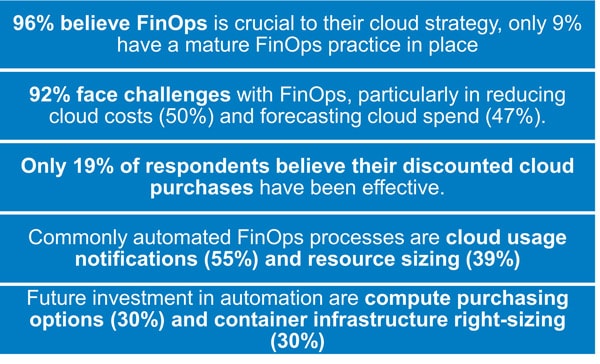
What are the Key Principles to follow
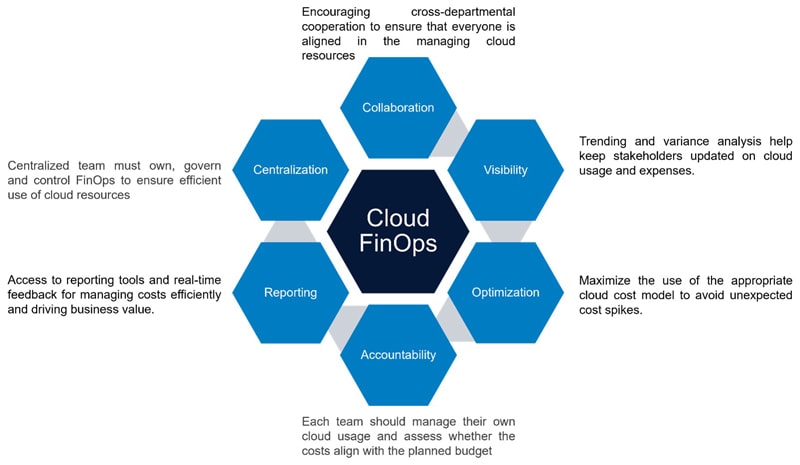
3 Phases of FinOps Life cycle
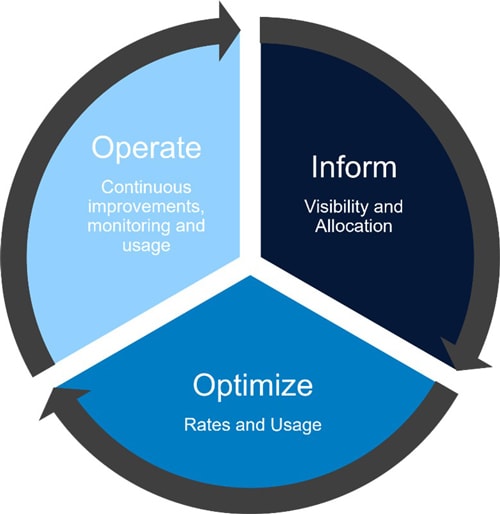
Inform (Visibility and Allocation) - Activities involving identifying the resources for the cloud cost their usage and efficiency data. Using the data for allocation, analysis and reporting which provides the teams to create budgeting, forecasting and building KPIs for benchmarking, developing metrics will be providing picture of business value for the organization cloud spend.
Optimize (Rates and Usage) - Involve identifying the points to improve cloud efficiency and usage with metrics and data creating from inform phase. Optimize phase involves building cloud capabilities to the right size with underutilized cloud resources.
Operate (Continuous improvements, monitoring and usage) - Involve creating cloud governance policies, compliance monitoring, empowering individuals through FinOps education and training programs. FinOps guidelines and automation policies are aligned with organizational goals.
Current state and Key Challenges
Enterprises adaptation of FinOps has increased due to microservices infrastructure mainly because of the increase in container management cost and unused resources. FinOps are used by enterprises to help the business to choose the cost-effective solution for the value.
Cloud spending has significantly increased in recent times.
Figure 1: Cloud Spend Analysis by Gartner and Flexera

The Cloud FinOps market is experiencing strong growth, according to various statistical studies.
Figure 2: FinOps Adoption in Enterprise by Flexera

What are the Benefits
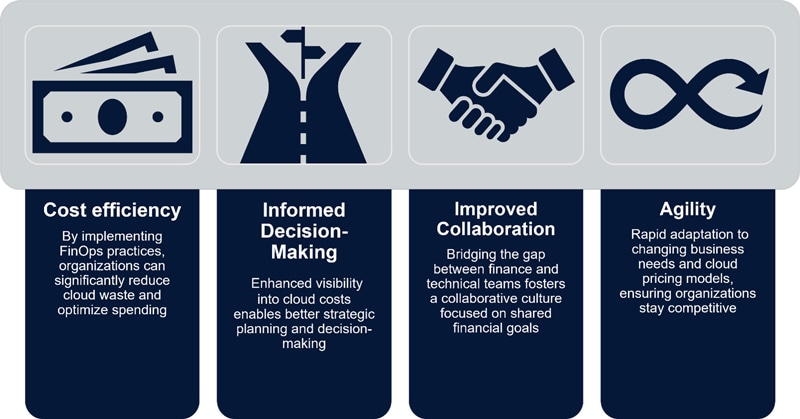
Businesses create budgets and plans for their existing and future cloud spending, set targets based on the industry standards and best practices, make sure all using cloud resources are tagged, categorized to help with cost allocation. Analyze business cloud usage including storage, databases, networking and virtual machines, use monitoring tools for cost and resource optimization to reduce cloud waste and improve reliability.
Organizations and FinOps Practitioners face many challenges when adopting FinOps

How to Tackle challenges
By implementing these practices, your organization will cultivate an integrated approach to managing cloud resources, fostering collaboration between finance, operations, and development to achieve the best possible outcomes.
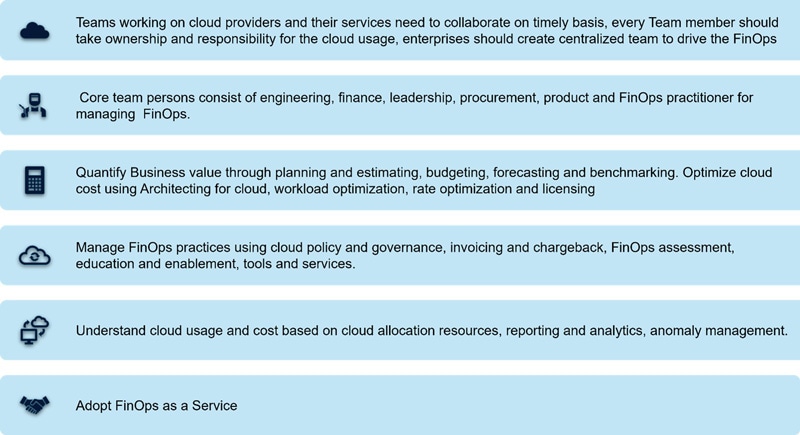
An effective cloud budgeting strategy will help to track and cut unnecessary costs.
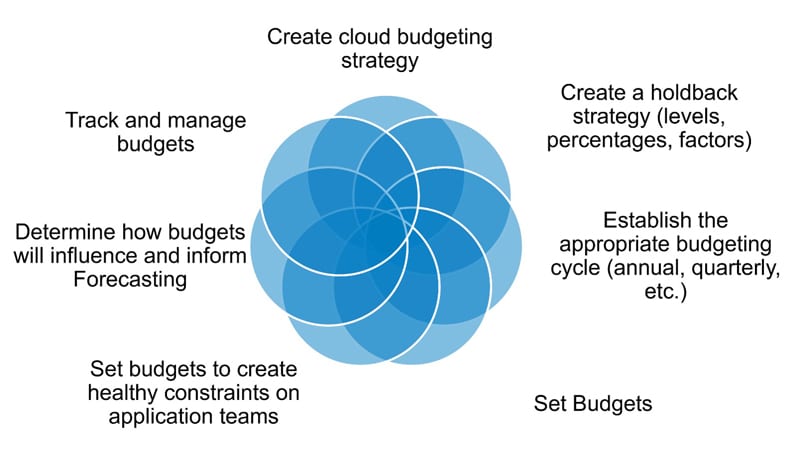
FinOps as a Service
FinOps-as-a-Service (FaaS) is the outsourced management and optimization of your cloud spending through advanced analytics, automation, and expert insights. It serves as a specialized extension that efficiently oversees your cloud expenditures.
FaaS providers seamlessly integrate with your cloud services and financial systems, offering a detailed analysis of costs. By utilizing third-party tools, including automation and AI, FaaS providers uncover opportunities for savings, automatically adjust resources, and forecast future usage patterns to enhance both cost and performance.
This outsourced expertise allows you to concentrate on your core activities while benefiting from sophisticated cost management and strategic insights. The goal is to maximize your cloud ROI without the need to expand your internal teams.
How to Approach with Hyperscalers
Since Cloud FinOps is essential for managing and optimizing cloud costs effectively, different cloud providers have various tools and practices for implementing FinOps. Here is how 3 major cloud provider services help to approach it.
| Amazon Web Services - AWS | Microsoft Azure | Google Cloud Platform - GCP |
|---|---|---|
| Cost Explorer: AWS provides Cost Explorer, which enabling users to visualize, comprehend, and manage their AWS costs and usage trends over time. | Azure Cost Management + Billing: This tool helps track and manage Azure spending, offering insights into costs and resource utilization. | Cost Management Tools: GCP offers tools for viewing and analyzing costs, including detailed billing reports and forecasts. |
| Budgets: Users can set custom budgets and receive alerts when they approach or exceed their budget thresholds. | Budgets and Alerts: Users can create budgets and set alerts to manage expenses effectively. | Budgets and Alerts: Users can create budgets and receive notifications when costs exceed defined thresholds. |
| AWS Pricing Calculator: Helps estimate costs based on expected usage. | Azure Pricing Calculator: It allows for cost estimation based on services used. | Pricing Calculator: A tool for estimating costs based on planned resource usage. |
| Tagging: AWS encourages tagging resources for better tracking and cost allocation. | Tags and Resource Groups: Azure supports tagging for better cost allocation and management. | Resource Labels: GCP allows labelling of resources for better cost tracking and analysis. |
| Savings Plans & Reserved Instances: Options for purchasing capacity in advance for significant savings. | Azure Saving plan and reserved instance: Save money by committing for some spend or reserve the instances. | Committed Use Discounts: Offers significant discounts for committing to use specific resources for a set period. |
| AWS Trust advisor: Helps improve security and resilience, increase performance, optimize costs and operate at scale. | Azure Advisor: Provides recommendations for optimizing resources and managing costs. | Active Assist: Generates recommendations and insights to help optimize resource. |
Common Practices followed across Providers are as per below
| Visibility | All providers emphasize the importance of visibility into usage and costs. |
|---|---|
| Cost Allocation | Tagging or labelling resources is a common practice to allocate costs effectively. |
| Automation | Automation of reports and alerts is encouraged to streamline FinOps practices. |
| Collaboration | Providers often highlight the need for collaboration between finance, operations, and engineering teams to optimize cloud spending. |
The People, Process, Technology (PPT) framework is a great way to structure the implementation of Cloud FinOps in an enterprise. This framework ensures that Cloud FinOps is not just about the tools you use, but also about the people involved and the processes that drive success.

Solution Strategy to be followed by any organizations.
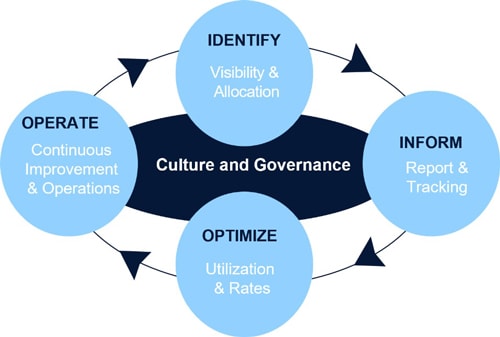
How AI will shape future of FinOps
AI will significantly transform Cloud FinOps in the future by enabling better cost management, resource optimization, and operational efficiency. Here are some impacts.
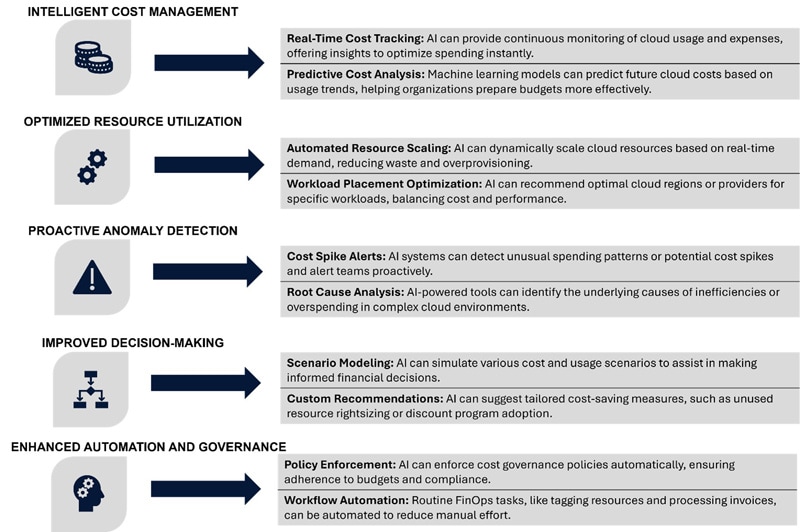
Case Studies
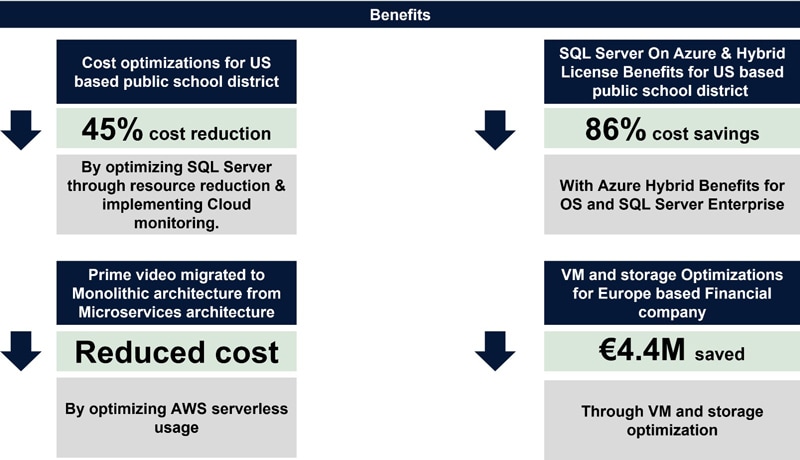
Market Trends
Figure 3: Global Cloud FinOps Market Size by Global market estimates

Figure 4: Cloud FinOps Market Global Forecast to 2029 by Markets and Markets
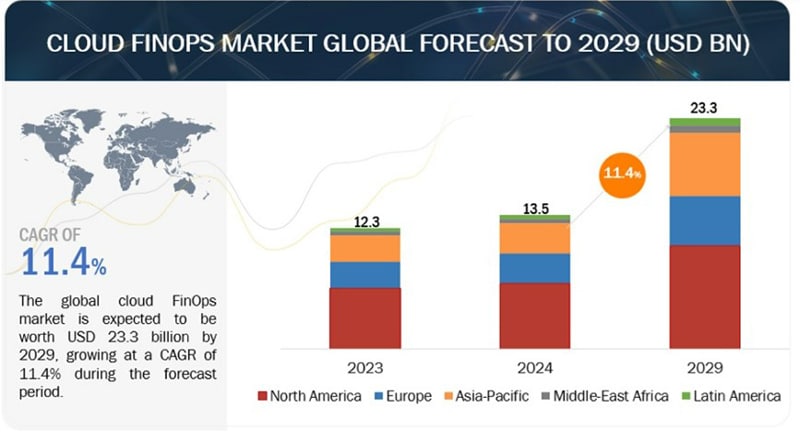
Conclusion
Cloud FinOps marks a significant shift in how organizations oversee their cloud investments. It is a transformative approach that empowers enterprises to unlock significant business value by optimizing cloud financial management. By cultivating a culture of financial accountability, harnessing advanced analytics, and promoting collaboration, businesses can substantially enhance their value in the digital realm. As companies navigate the complexities of cloud environments, adopting FinOps practices will streamline operations while fostering innovation and bolstering competitive advantage.
By integrating AI into Cloud FinOps, organizations can achieve greater visibility, control, and predictability in managing cloud costs, ultimately driving financial efficiency and scalability in increasingly complex multi-cloud environments.
Cloud FinOps is not just about cost reduction, it is about unlocking the full potential of cloud computing to drive business growth and innovation. As businesses continue to accelerate their digital transformation, adopting Cloud FinOps practices will be essential for sustaining long-term growth, maximizing cloud investments, and gaining a competitive advantage in an increasingly complex digital landscape. Embracing Cloud FinOps is not just an operational necessity, it is a strategic imperative for achieving lasting enterprise success.
References
Throughout the preparation of this whitepaper, information and insights were drawn from a range of reputable sources, including research papers, articles, and resources. Some of the key references that informed the content of this whitepaper include:
These references provided the foundation upon which the discussions, insights, and recommendations in this whitepaper were based.

Subscribe
To keep yourself updated on the latest technology and industry trends subscribe to the Infosys Knowledge Institute's publications
Count me in!









